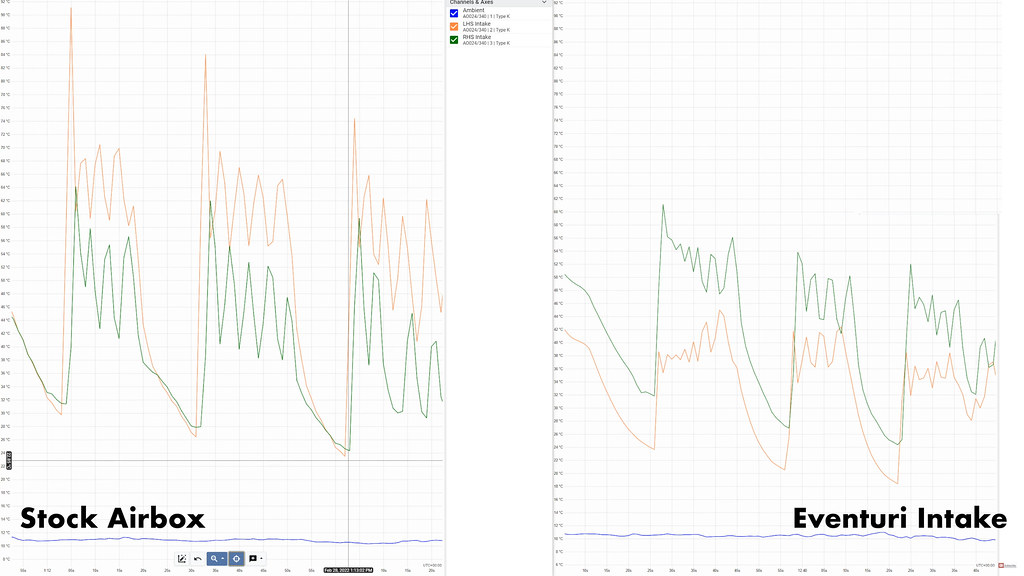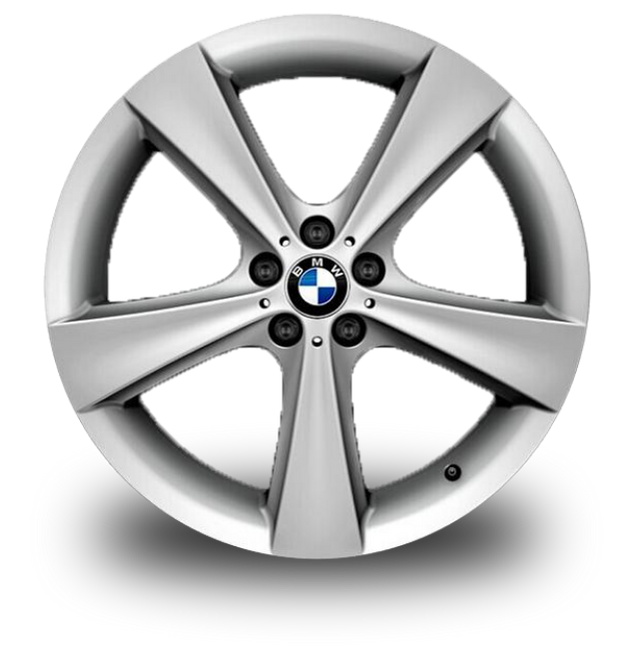
BMW M4 (2020-2025) G82 Eventuri Black Carbon Intake
|
BMW G8X M3/M4 Performance Gain: 13-18hp, 12-16ft-lb (Stock Tune) Turbo Inlet Area Increased up to 160% Filtration Area Increased up to 40% Presenting an intake which truly sets a benchmark for the BMW G8X M3/M4 platform. We have carried out intensive R&D to develop an intake which not only improves on the stock M3/M4 but also is future proof in its capacity to cater for high powered builds well in excess of 1000hp. Our system is a complete redesign from the airboxes to the turbo inlets with the aim of reducing pressure loss while increasing the flow rate and keeping inlet temperatures low. We have maximised the usage of the available space to employ 2 custom made filters with a 40% larger filtration area than stock. These are used in our Patented Venturi housings to smoothly funnel the air to the turbo inlets. The inlets themselves are up to 160% larger in cross sectional area than stock and are designed with an advanced dimpled inner surface to reduce frictional losses between the flow and the wall boundary. By allowing a cushion of air at the wall surface, airflow is able to move through the inlets at higher flow rates with reduced pressure loss. This allows the turbos to draw air with less resistance and therefore reduce the wastegate duty cycle resulting in higher overall performance. The Eventuri Difference The G8X M3/M4 Eventuri system uses our Patented Carbon Fiber Housings with our Gen 2 bespoke filters, which provide an aerodynamically efficient airflow path from the filter to the turbos. Not just another cone filter with a heat shield but a unique design which invokes the Venturi effect and maintains laminar flow conditions to reduce the drag on the turbo. |
Performance
Below is a dyno graph showing the comparison between the Eventuri and the stock airbox on a standard B58 M240i. As you can see, power and torque are increased through a large portion of the rpm range. This translates on the road to increased part throttle and full throttle response with the car pulling much more eagerly to the redline. At peak RPM the power curve for the intake merges with the stock airbox - this is due to the fact that on the dyno, the intake relies on the fan to push air through the scoop and into the filter. At high RPM the fan is simply inadequate in providing the required airflow - on the road this would not be a problem and we would expect the intake to continue making power gains up to the redline. The testing was done on the same day back-to-back and temperatures were monitored to ensure consistency.
Dyno Testing
This intake has been independently dyno tested by BR Performance in Belgium. Tests were done back to back against the stock airbox and several runs were taken with each configuration. The car tested was without charcoal filters. We took the best results from the stock airbox and the best from the Eventuri system. The dyno results show a consistent gain throughout the RPM range which can be attributed to the turbos reaching peak boost earlier and with a lower wastegate duty cycle due to the higher efficiency of the intake system. This gain is despite the dyno cell temperatures rising from 11.8 deg C for the stock system tests to almost 16 deg C for the Eventuri tests. The performance gain translates on the road to increased part throttle and full throttle response with the car pulling much more eagerly to the redline.
IAT Testing
Turbo charged cars can build up a lot of engine bay heat which can be detrimental to performance if the intake system is not sealed against it. Even with intercoolers and charge coolers, it is important to minimise Inlet Air Temperatures (IATs) as these cooling devices work with an efficiency ratio so the output air temperature is affected by the input air temperature. Derestricting the intake by using open cones, even if heat shielded will inevitably pull in hot air from the engine bay. Our system being fully sealed solves this problem while still derestricting the flow path using bigger volumes. To demonstrate, we data logged air temperatures using thermocouples just before each turbo. Comparisons were taken between stock and Eventuri on the same day with the same ambient conditions. Our M3 was allowed to heat soak and then it was accelerated from 30mph to 90mph in 6th gear to measure the change in temperature across each run. At 90mph, throttle was released and brakes were applied to 30mph at which point the car accelerated again to 90mph. A total of 3 pulls were made with both intake configurations.
The first graph shows the temperatures on before both turbos with eth stock airbox on the left and the Eventuri intake on the right. Due to scaling, the axes are not perfectly matched between both graphs but the numbers can be clearly seen. As expected, the RHS of the intake showed similar data between stock and Eventuri since the flow path and materials are similar. However, the LHS intake shows a significant improvement in IAT for the Eventuri. This can be seen in the second graph where the 2 charts are overlaid. On each successive pull the Eventuri shows a lower IAT as compared to stock and also the spike in temperature as throttle is lifted is significantly lower with the Eventuri. This difference is down to the more direct flow path with the Eventuri and also the materials used in the turbo inlet.

Product Details
Dyno Testing
This intake has been independently dyno tested by BR Performance in Belgium. Tests were done back to back against the stock airbox and several runs were taken with each configuration. The car tested was without charcoal filters. We took the best results from the stock airbox and the best from the Eventuri system. The dyno results show a consistent gain throughout the RPM range which can be attributed to the turbos reaching peak boost earlier and with a lower wastegate duty cycle due to the higher efficiency of the intake system. This gain is despite the dyno cell temperatures rising from 11.8 deg C for the stock system tests to almost 16 deg C for the Eventuri tests. The performance gain translates on the road to increased part throttle and full throttle response with the car pulling much more eagerly to the redline.
IAT Testing
Turbo charged cars can build up a lot of engine bay heat which can be detrimental to performance if the intake system is not sealed against it. Even with intercoolers and charge coolers, it is important to minimise Inlet Air Temperatures (IATs) as these cooling devices work with an efficiency ratio so the output air temperature is affected by the input air temperature. Derestricting the intake by using open cones, even if heat shielded will inevitably pull in hot air from the engine bay. Our system being fully sealed solves this problem while still derestricting the flow path using bigger volumes. To demonstrate, we data logged air temperatures using thermocouples just before each turbo. Comparisons were taken between stock and Eventuri on the same day with the same ambient conditions. Our M3 was allowed to heat soak and then it was accelerated from 30mph to 90mph in 6th gear to measure the change in temperature across each run. At 90mph, throttle was released and brakes were applied to 30mph at which point the car accelerated again to 90mph. A total of 3 pulls were made with both intake configurations.
The first graph shows the temperatures on before both turbos with eth stock airbox on the left and the Eventuri intake on the right. Due to scaling, the axes are not perfectly matched between both graphs but the numbers can be clearly seen. As expected, the RHS of the intake showed similar data between stock and Eventuri since the flow path and materials are similar. However, the LHS intake shows a significant improvement in IAT for the Eventuri. This can be seen in the second graph where the 2 charts are overlaid. On each successive pull the Eventuri shows a lower IAT as compared to stock and also the spike in temperature as throttle is lifted is significantly lower with the Eventuri. This difference is down to the more direct flow path with the Eventuri and also the materials used in the turbo inlet.

Sound
Sound clips coming soon
Video
Installation Guide
Installation Guide LINK Click Here

Need Help Choosing The Right Parts? Contact Us!
Stay up to Date with EuroFlow
Get our latest news and product promotion















